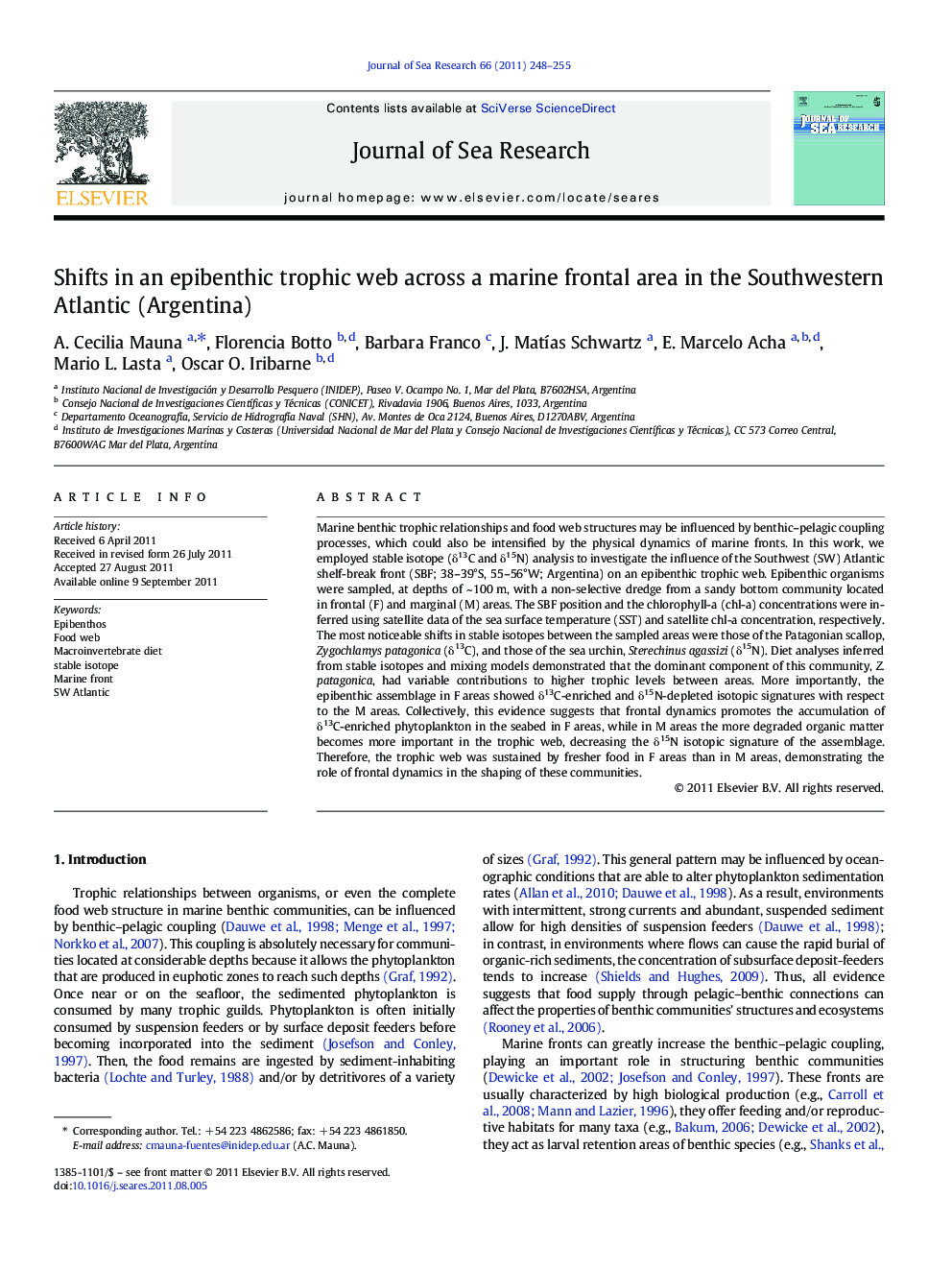| کد مقاله | کد نشریه | سال انتشار | مقاله انگلیسی | نسخه تمام متن |
|---|---|---|---|---|
| 4550093 | 1328129 | 2011 | 8 صفحه PDF | دانلود رایگان |

Marine benthic trophic relationships and food web structures may be influenced by benthic–pelagic coupling processes, which could also be intensified by the physical dynamics of marine fronts. In this work, we employed stable isotope (δ13C and δ15N) analysis to investigate the influence of the Southwest (SW) Atlantic shelf-break front (SBF; 38–39°S, 55–56°W; Argentina) on an epibenthic trophic web. Epibenthic organisms were sampled, at depths of ~ 100 m, with a non-selective dredge from a sandy bottom community located in frontal (F) and marginal (M) areas. The SBF position and the chlorophyll-a (chl-a) concentrations were inferred using satellite data of the sea surface temperature (SST) and satellite chl-a concentration, respectively. The most noticeable shifts in stable isotopes between the sampled areas were those of the Patagonian scallop, Zygochlamys patagonica (δ13C), and those of the sea urchin, Sterechinus agassizi (δ15N). Diet analyses inferred from stable isotopes and mixing models demonstrated that the dominant component of this community, Z. patagonica, had variable contributions to higher trophic levels between areas. More importantly, the epibenthic assemblage in F areas showed δ13C-enriched and δ15N-depleted isotopic signatures with respect to the M areas. Collectively, this evidence suggests that frontal dynamics promotes the accumulation of δ13C-enriched phytoplankton in the seabed in F areas, while in M areas the more degraded organic matter becomes more important in the trophic web, decreasing the δ15N isotopic signature of the assemblage. Therefore, the trophic web was sustained by fresher food in F areas than in M areas, demonstrating the role of frontal dynamics in the shaping of these communities.
► Stable isotope analysis shows the front influence on an epibenthic trophic web.
► We detected frontal influence at small spatial scales (40 km).
► Notable shifts in stable isotopes occur in a scallop (δ13C) and a sea urchin (δ15N).
► The benthic assemblage near the front is δ13C enriched and δ15N depleted.
► Near the front the benthic assemblage may rely on fresher food than away from it.
Journal: Journal of Sea Research - Volume 66, Issue 3, October 2011, Pages 248–255